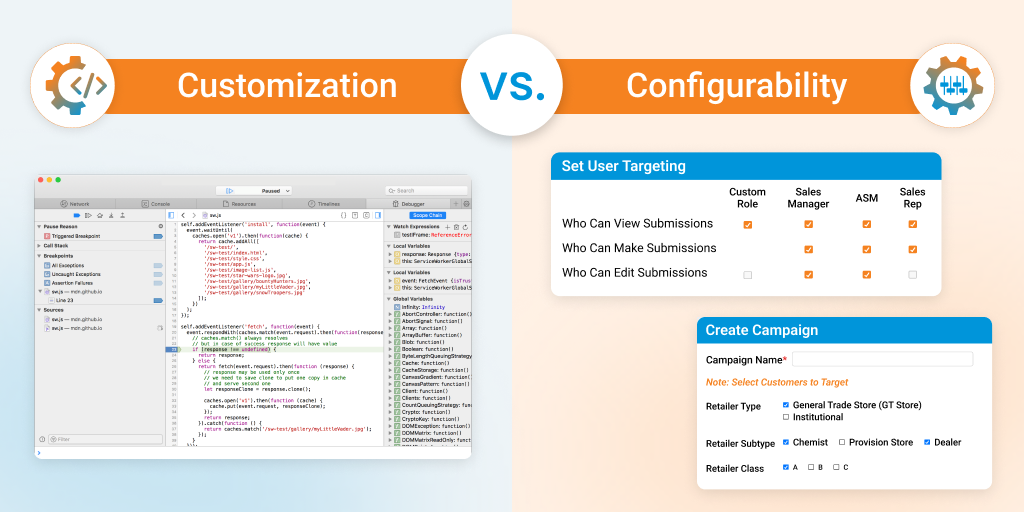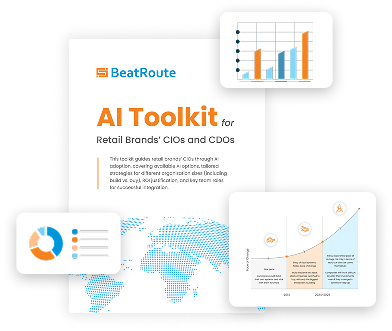The 90/10 RULE for software customization

In today’s fast-moving business environment, software customization can either enable agility or lead to long-term technical debt. Many companies fall into the trap of over-customizing their platforms to meet every possible requirement. This often results in rising costs, inflexible systems, and slowed innovation.
The 90/10 rule for software customization provides a practical framework to keep your digital transformation lean and adaptable. The idea is simple: fewer than 10% of your new business requirements should require developer-led changes. The remaining 90% should be achievable through configuration alone – using built-in settings and toggles in the admin panel.
In this blog, we’ll explore why smart software customization matters, how the 90/10 rule works, and what it means for growing your business without being held back by your tech stack.
Customization vs Configuration: What’s the Difference?
Customization means altering software by writing code. This usually involves development projects, QA cycles, deployment schedules, and long turnaround times. It’s slow, expensive, and hard to maintain.
Configuration, on the other hand, involves changing the behavior or features of a system using in-built settings—no code required. It’s fast, flexible, and doesn’t require tech intervention.
Why Does This Matter?
Custom code ties you down. Every time your strategy evolves—or your market changes—you need a new development sprint. This is not only inefficient, but it also pulls valuable resources away from innovation.
The Cost of Customization: Why It’s a Trap
Many organizations make the mistake of treating every new requirement as a development project. But this approach comes with serious downsides:
- High Maintenance Costs: Custom code needs continuous updates and support.
- Slow Turnaround: Coding, testing, and deploying even small changes takes time.
- Limited Scalability: Hard-coded solutions don’t adapt well when your business scales or evolves.
- Stalled Innovation: Developers get bogged down in maintaining existing systems instead of building new ones.
Customization creates a bottleneck—one that throttles your speed to market and operational agility.
Why Configurability Wins (Every Time)
Configurability flips the script. When your software allows for non-coding changes, you’re free to:
- Make updates in real-time from your admin panel
- Adapt quickly to evolving business needs
- Avoid developer queues and IT dependencies
- Scale operations without re-architecting your system
The result? A more agile, resilient, and innovation-ready business.
Canned Systems vs Enterprise SaaS: The Real Difference
Most “canned” or out-of-the-box SaaS systems are rigid. They’re built for narrow use cases, and anything beyond their default setup requires vendor-led custom development.
In contrast, enterprise-grade SaaS systems like BeatRoute are built for complexity. They acknowledge that your sales strategy in Gujarat might differ from your approach in Maharashtra—or that your retail model won’t look like your distribution model.
These platforms thrive on configurability, making it easy to evolve without a single line of code.
Real-World Use Cases: How Configurability Plays Out
1. Custom Sales Team Hierarchies
Problem: One region uses 2 levels of sales hierarchy, another uses 4.
- Canned System: Only supports 5 fixed levels—customization required.
- Enterprise SaaS (BeatRoute): Configure any number of hierarchy levels directly in the admin panel.
2. Role-Based Data Permissions
Problem: Only Territory Sales Managers should edit specific customer fields.
- Canned System: Requires coding changes from the vendor.
- Enterprise SaaS: Set field-level edit permissions by user role in minutes—no code involved.
3. Conditional Automations
Problem: Trigger workflows when a form field equals a certain value.
- Canned System: Custom logic needs to be coded and deployed.
- Enterprise SaaS: Drag-and-drop automation tools make this a 5-minute job.
Key Takeaways: Why the 90/10 Rule Should Be Your New Standard
- Minimize Risk: Avoid the maintenance nightmare of custom code.
- Maximize Speed: Get to market faster with out-of-the-box configurability.
- Stay Scalable: Evolve without hitting tech limits.
- Enable Non-Tech Teams: Let business users drive digital changes directly.
- Free Up Developers: Focus engineering on innovation, not upkeep.
The Bottom Line: Choose Configurability, Not Complexity
Customization feels empowering—until it becomes your biggest bottleneck. The smartest companies are ditching the code-heavy mindset and adopting platforms that give them agility out of the box.
By following the 90/10 Rule, you protect your team’s bandwidth, reduce your total cost of ownership, and keep your digital stack ready for whatever the market throws your way.
Ready to see how enterprise SaaS built on configurability can transform your business? Book a free demo of BeatRoute here.
Use Goal-Driven AI to Achieve Retail Sales Uplift, Today!
Join enterprises in 20+ countries that trust BeatRoute, the globally dominant AI platform for sales force automation, field sales, DMS, and eB2B
Latest Ebooks & Reports
Download these free reports & ebooks to prepare your brands for future-ready route to market.


